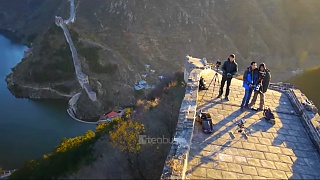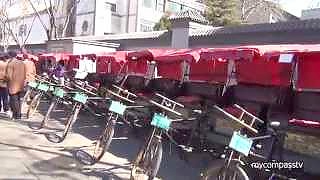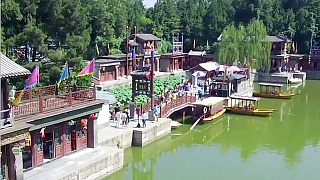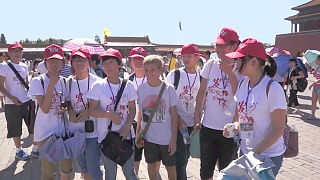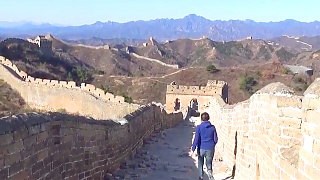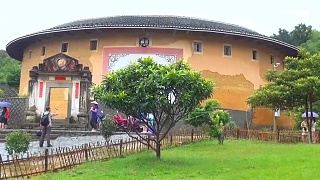Beijing: 20 Kid-Friendly Places to Visit
- The Forbidden City (紫禁城 Zǐjìnchéng): Explore the ancient imperial palace complex and its vast courtyards.
- The Great Wall of China (长城 Chángchéng): Take a family hike along this iconic UNESCO World Heritage Site.
- Beijing Zoo (北京动物园 Běijīng Dòngwùyuán): Visit pandas and other animals at one of China's oldest and largest zoos.
- Beihai Park (北海公园 Běihǎi Gōngyuán): Enjoy boating on the lake and exploring the gardens and pavilions.
- 798 Art District (798艺术区 Qījiǔbā Yìshùqū): Discover contemporary art in this former factory complex turned art district.
- Beijing Aquarium (北京海洋馆 Běijīng Hǎiyánguǎn): Explore the underwater world with a variety of marine life exhibits.
- Beijing Children's Museum (北京儿童博物馆 Běijīng Értóng Bówùguǎn): Interactive museum featuring exhibits designed for children.
- Summer Palace (颐和园 Yíhé Yuán): Stroll through beautiful gardens and enjoy boat rides on Kunming Lake.
- Happy Valley Beijing (欢乐谷 Huānlègǔ Běijīng): Amusement park with rides and entertainment for the whole family.
- Beijing Botanical Garden (北京植物园 Běijīng Zhíwùyuán): Explore diverse plant collections and enjoy outdoor activities.
- Temple of Heaven Park (天坛公园 Tiāntán Gōngyuán): Watch locals practice tai chi and fly kites in this historic park.
- Beijing National Stadium (Bird's Nest) (北京国家体育场 Běijīng Guójiā Tǐyùchǎng): Visit the iconic Olympic venue and explore its architecture.
- Beijing Planetarium (北京天文馆 Běijīng Tiānwénguǎn): Discover the wonders of the universe through interactive exhibits.
- Beijing Ancient Observatory (北京古观象台 Běijīng Gǔ Guānxiàngtái): Learn about ancient Chinese astronomy and observe celestial objects.
- Capital Museum (首都博物馆 Shǒudū Bówùguǎn): Explore Chinese art and history with family-friendly exhibits.
- Beijing World Park (北京世界公园 Běijīng Shìjiè Gōngyuán): Travel around the world in a day with replicas of famous landmarks.
- Chinese Ethnic Culture Park (中国民族文化公园 Zhōngguó Mínzú Wénhuà Gōngyuán): Learn about China's diverse ethnic groups through cultural displays.
- Beijing Toy Museum (北京玩具博物馆 Běijīng Wánjù Bówùguǎn): Explore a vast collection of toys from different eras and cultures.
- Beijing Olympic Park (北京奥林匹克公园 Běijīng Àolínpǐkè Gōngyuán): Enjoy green spaces, walking paths, and iconic Olympic venues.
- Beijing Botanical Garden (北京植物园 Běijīng Zhíwùyuán): Explore diverse plant collections and enjoy outdoor activities.
Beijing: 30 More Places to Visit
- Tiananmen Square (天安门广场 Tiān'ānmén Guǎngchǎng): Iconic city square with historical significance and monumental architecture.
- Hutongs (胡同 Hútòng): Explore Beijing's traditional narrow alleys and courtyard residences by rickshaw or walking tour.
- Prince Gong's Mansion (恭王府 Gōng Wáng Fǔ): Visit this well-preserved imperial residence with beautiful gardens and architecture.
- Yonghe Lama Temple (雍和宫 Yōng hé Gōng): Discover Tibetan Buddhist culture in this stunning temple complex.
- National Museum of China (中国国家博物馆 Zhōngguó Guójiā Bówùguǎn): Explore China's history and culture through extensive exhibits and artifacts.
- Beijing National Aquatics Center (Water Cube) (北京国家游泳中心 Běijīng Guójiā Yóuyǒng Zhōngxīn): Visit the iconic venue from the 2008 Olympics, now transformed into a water park.
- Beijing Ancient Architecture Museum (北京古建筑博物馆 Běijīng Gǔ Jiànzhù Bówùguǎn): Learn about traditional Chinese architecture in this unique museum.
- Beijing Railway Museum (北京铁路博物馆 Běijīng Tiělù Bówùguǎn): Explore the history of Chinese railways with exhibits of locomotives and artifacts.
- National Centre for the Performing Arts (国家大剧院 Guójiā Dàjùyuàn): Marvel at the futuristic architecture and enjoy performances in this iconic venue.
- Beijing Capital Museum (北京首都博物馆 Běijīng Shǒudū Bówùguǎn): Discover Chinese art and history through extensive collections and exhibitions.
- Beijing Ming Tombs (明十三陵 Míng Shísān Líng): Explore the burial site of Ming Dynasty emperors with grand architecture and scenic surroundings.
- Beijing Museum of Natural History (中国科学技术馆 Zhōngguó Kēxué Jìshùguǎn): Learn about the natural world with exhibits on dinosaurs, fossils, and ecosystems.
- Beijing Bell and Drum Towers (北京钟鼓楼 Běijīng Zhōnggǔ Lóu): Visit these historic structures and enjoy panoramic views of the city.
- Capital Library of China (中国国家图书馆 Zhōngguó Guójiā Túshūguǎn): Explore a vast collection of books and cultural resources in this modern library.
- Yuanmingyuan (Old Summer Palace) (圆明园 Yuánmíngyuán): Explore the ruins of this historic imperial palace complex with beautiful gardens.
- Beijing National Art Museum (北京国家艺术博物馆 Běijīng Guójiā Yìshù Bówùguǎn): Discover Chinese art through extensive collections of painting, sculpture, and calligraphy.
- Beijing Modern Art Gallery (北京现代美术馆 Běijīng Xiàndài Měishùguǎn): Explore contemporary Chinese art in this vibrant gallery space.
- Beijing Aviation Museum (北京航空馆 Běijīng Hángkōngguǎn): Learn about the history of aviation in China with exhibits of aircraft and technology.
- Beijing Confucius Temple and Imperial College (北京孔庙和国子监 Běijīng Kǒngmiào hé Guózǐjiàn): Discover Confucian culture in this historic temple and educational institution.
- Beijing South Railway Station (北京南站 Běijīng Nánzhàn): Experience modern transportation and marvel at the architecture of this major railway hub.
- Beijing Dongyue Temple (北京东岳庙 Běijīng Dōngyuèmiào): Explore Chinese folk religion and mythology in this unique temple complex.
- Beijing Shijingshan Amusement Park (北京石景山游乐园 Běijīng Shíjǐngshān Yóulèyuán): Enjoy rides and attractions in this popular amusement park.
- Beijing Garden Expo Park (北京园博园 Běijīng Yuánbóyuán): Explore beautiful gardens and landscapes in this scenic park.
- Beijing National Stadium (Bird's Nest) (北京国家体育场 Běijīng Guójiā Tǐyùchǎng): Visit the iconic Olympic venue and explore its architecture.
- Beijing Capital Museum (北京首都博物馆 Běijīng Shǒudū Bówùguǎn): Discover Chinese art and history through extensive collections and exhibitions.
- Beijing Ming Tombs (明十三陵 Míng Shísān Líng): Explore the burial site of Ming Dynasty emperors with grand architecture and scenic surroundings.
- Beijing Museum of Natural History (中国科学技术馆 Zhōngguó Kēxué Jìshùguǎn): Learn about the natural world with exhibits on dinosaurs, fossils, and ecosystems.
- Beijing Bell and Drum Towers (北京钟鼓楼 Běijīng Zhōnggǔ Lóu): Visit these historic structures and enjoy panoramic views of the city.
- Capital Library of China (中国国家图书馆 Zhōngguó Guójiā Túshūguǎn): Explore a vast collection of books and cultural resources in this modern library.
- Yuanmingyuan (Old Summer Palace) (圆明园 Yuánmíngyuán): Explore the ruins of this historic imperial palace complex with beautiful gardens.
Beijing, the capital city of China, is a vibrant metropolis steeped in history, culture, and modernity. Here's a brief overview of what you can expect as a tourist in Beijing:
Historical Landmarks:
The Great Wall of China: One of the most iconic structures in the world, the Great Wall is easily accessible from Beijing. Mutianyu and Badaling sections are popular among tourists.
Forbidden City (Palace Museum): A UNESCO World Heritage Site, this vast imperial palace complex was home to Chinese emperors for over 500 years. It houses numerous halls, courtyards, and historical artifacts.
Temple of Heaven: A masterpiece of Chinese architecture, this ancient temple complex served as a place of worship for emperors to pray for good harvests.
Summer Palace: A stunning ensemble of lakes, gardens, and palaces, the Summer Palace served as a retreat for emperors during the Qing dynasty.
Tiananmen Square: One of the largest city squares in the world, Tiananmen Square is flanked by important landmarks such as the Monument to the People's Heroes, the Great Hall of the People, and the Mausoleum of Mao Zedong.
Cultural Sites:
Beijing Hutongs: Explore the narrow alleyways and traditional courtyard residences of Beijing's historic neighborhoods. You can take a rickshaw tour or simply wander around on foot.
Beijing Opera: Experience traditional Chinese opera performances at venues like the Liyuan Theater or the Chang'an Grand Theatre.
798 Art District: A hub of contemporary art and culture, this former industrial area is now home to numerous galleries, studios, and cafes.
Modern Attractions:
Olympic Park: Visit iconic structures such as the Bird's Nest (National Stadium) and the Water Cube (National Aquatics Center) from the 2008 Beijing Olympics.
CBD (Central Business District): Marvel at the futuristic skyline of Beijing's modern business district, which includes landmarks like the CCTV Headquarters and the China World Trade Center Tower III.
Culinary Delights:
Peking Duck: Indulge in Beijing's most famous dish, crispy roast duck served with pancakes, scallions, and hoisin sauce.
Street Food: Explore the city's vibrant street food scene and sample local delicacies like jianbing (savory crepes), lamb skewers, and dumplings.
Practical Tips:
Transportation: Beijing has an extensive public transportation system, including the subway, buses, and taxis. However, traffic can be heavy, so plan your travels accordingly.
Language: While English is not widely spoken, especially outside tourist areas, many signs and transportation announcements are in English. It's helpful to carry a translation app or a phrasebook.
Weather: Beijing experiences four distinct seasons, with hot summers and cold winters. The best times to visit are spring (April to June) and autumn (September to October) when the weather is mild and comfortable.
Etiquette: Respect local customs and traditions, such as removing your shoes before entering someone's home and using both hands to pass or receive items.
Beijing offers a rich tapestry of experiences for tourists, blending ancient heritage with modern innovations. Whether you're fascinated by history, culture, or culinary delights, there's something for everyone in this dynamic city.
 50 places to visit in BeiJing
50 places to visit in BeiJing
